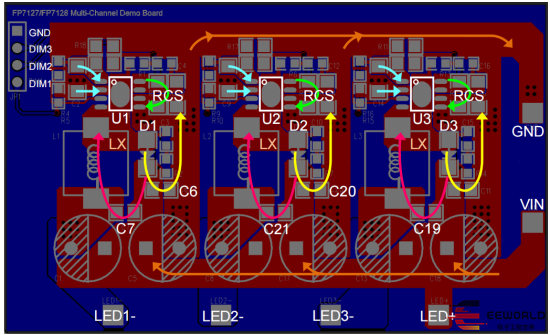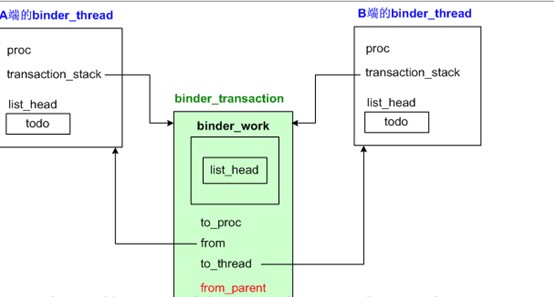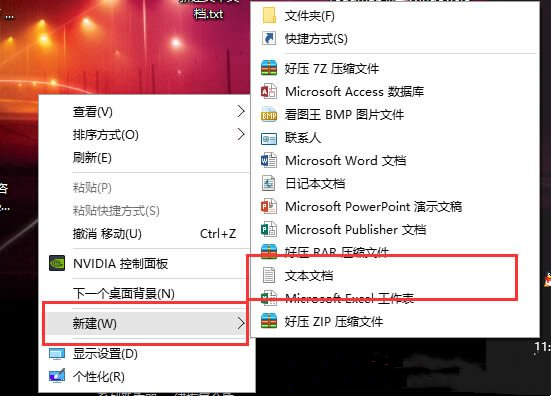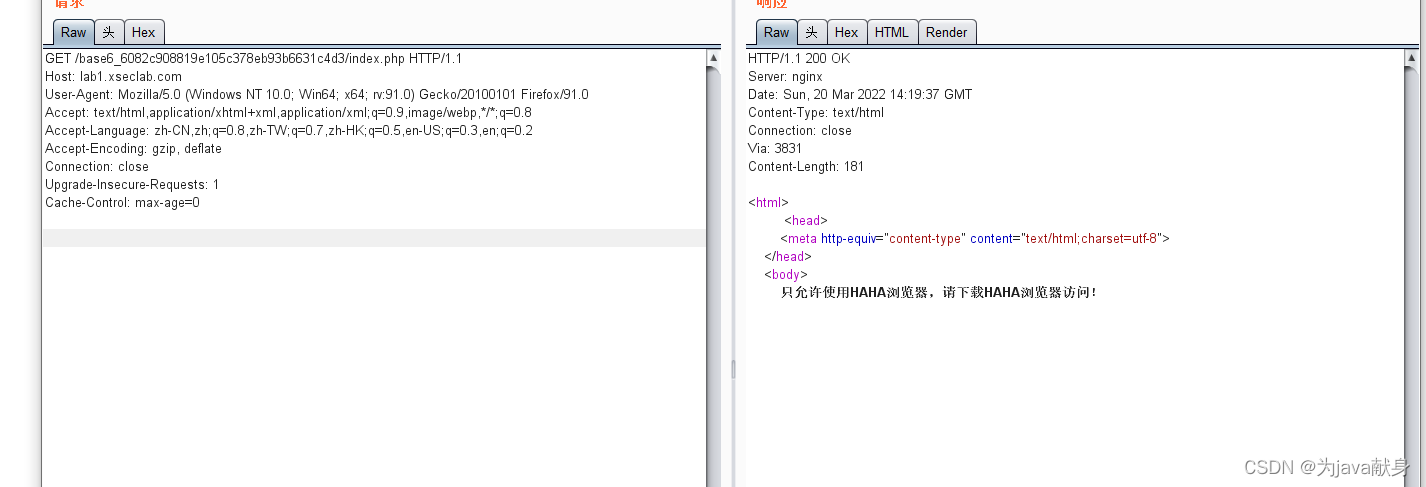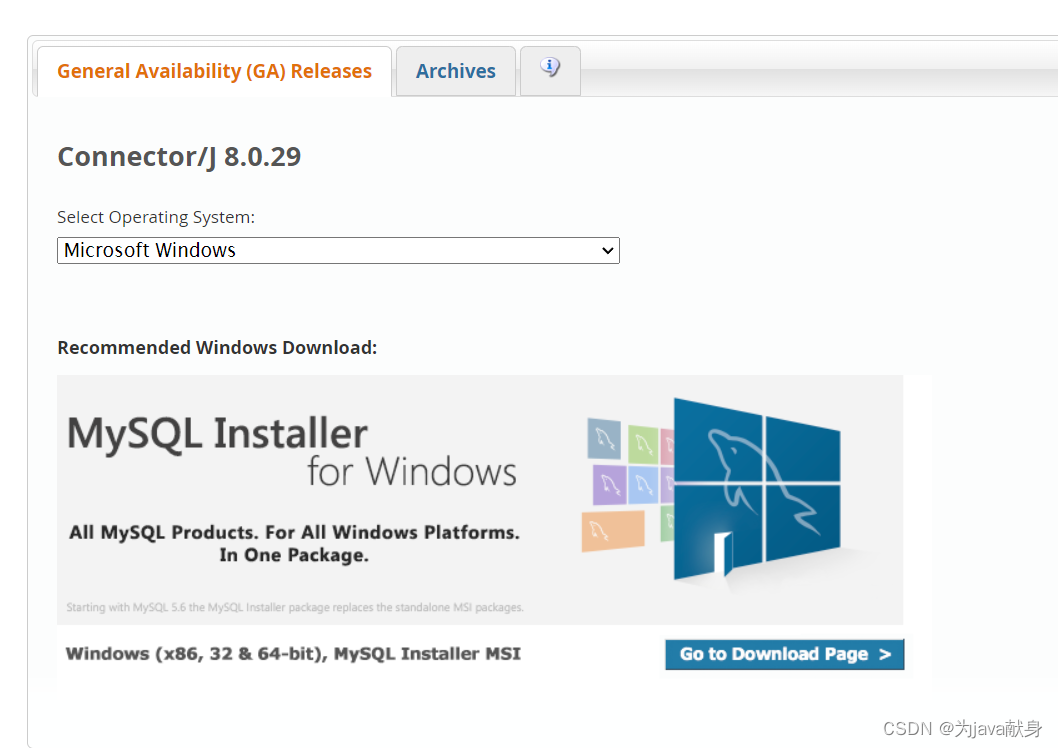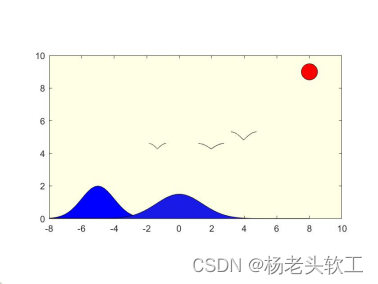当前位置:网站首页>4.发布帖子,评论帖子
4.发布帖子,评论帖子
2022-08-02 14:10:00 【鱼子酱:P】
目录
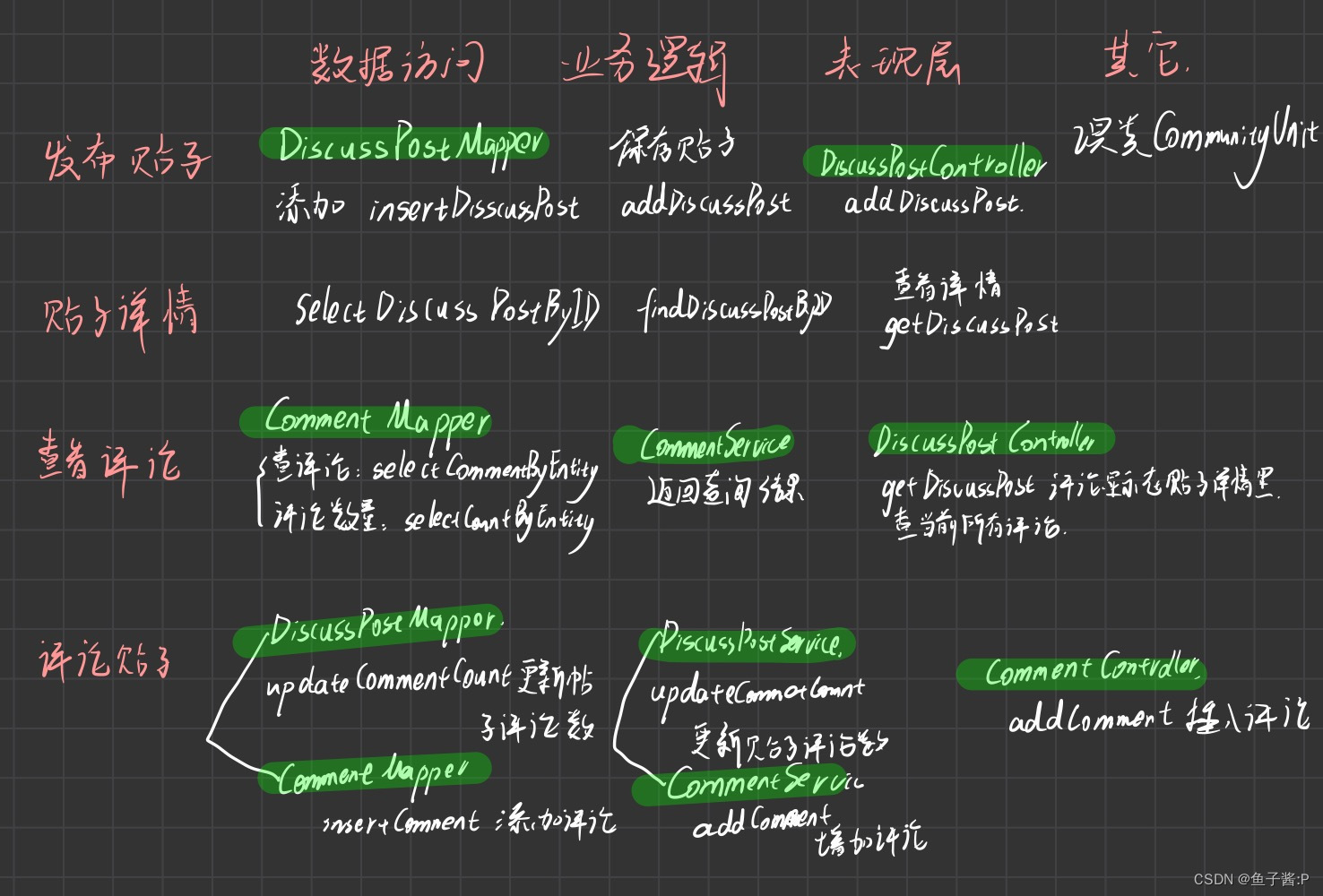
一:发布帖子
用到的表:DiscussPost
方法:用到AJAX,网页能将增量更新呈现在页面上,而不需要刷新整个页面
异步通信技术,虽然X代表XML,但目前JSON使用的比XML更加普遍
思路
- 在首页点击 “我要发布”,填写标题和正文,点击发布,会执行index.js中的publish()方法,触发ajax异步发送帖子请求,映射到DiscussPostController(/discuss)层的 /add 路径。执行控制器类 DiscussPostController 的 addDiscussPost()方法。里面调用 discussPostService.addDiscussPost 方法,将post 中的 title,content 转义HTML标记,,然后调用 discussPostMapper.insertDiscussPost(post) 存入数据。通过其对应的SQL语句将帖子内容插进 discuss_post表中。
- 简单来说就是 用post方式提交接json格式数据给目标URL,controller层接收到请求后,处理/add请求,前端根据返回的状态码以及提示信息判断是否添加成功。
开发流程
1.我们从最简单的工具类开始,在里面写上了我们需要的一些工具方法;
在util.CommunityUtil类中添加新的工具方法,用于转换json字符串:返回状态码,在贴子发布后,显示发布成功。
//得到JSON格式的字符串
//输入为:编号、提示、业务数据
public static String getJSONString(int code, String msg, Map<String, Object> map){
JSONObject json = new JSONObject();
json.put("code",code);
json.put("msg",msg);
if (map!=null){
for (String key: map.keySet()) {
json.put(key, map.get(key));
}
}
return json.toJSONString();
}
//得到JSON格式的字符串(重载1:无业务数据)
public static String getJSONString(int code, String msg){
return getJSONString(code, msg, null);
}
//得到JSON格式的字符串(重载2:无提示、业务数据)
public static String getJSONString(int code){
return getJSONString(code, null, null);
}
2. 在数据层dao中的DiscussPostMapper接口新添加方法,并在对应的discusspost-mapper添加对应的SQL语句
//添加帖子
int insertDiscussPost(DiscussPost discussPost);
//SQL语句
<insert id="insertDiscussPost" parameterType="DiscussPost">
insert into discuss_post(<include refid="insertFields"></include>)
values (#{userId},#{title},#{content},#{type},#{status},#{createTime},#{commentCount},#{score})
</insert>
3. 业务的核心逻辑都在Service层,在service类中编写了一些需要的业务逻辑,业务层需要定义一个对帖子进行保存的方法,最后调用dao里的方法,实现对数据层的更新。
在service.DiscussPostService类下新建方法:addDiscussPost()。
@Autowired
private SensitiveFilter sensitiveFilter;
public int addDiscussPost(DiscussPost post){
if(post==null){
throw new IllegalArgumentException("参数不能为空!");
}
//转义HTML标记:防止人家发布的内容中包含html的标签,导致破坏页面
//只用对主题、评论进行转义、过滤操作
post.setTitle(HtmlUtils.htmlEscape(post.getTitle()));
post.setContent(HtmlUtils.htmlEscape(post.getContent()));
//过滤敏感词
post.setTitle(sensitiveFilter.filter(post.getTitle()));
post.setContent(sensitiveFilter.filter(post.getContent()));
return discussPostMapper.insertDiscussPost(post);
}
4. Service之后,最后就是视图层的编写,分为两个部分:控制器 + 页面。
在controller目录下新建:DiscussPostController,实现增加帖子的功能,以后所有与发帖相关的请求都在这里处理。
package com.nowcoder.mycommunity.controller;
//处理所有与发帖相关的请求
@Controller
@RequestMapping("/discuss")
public class DiscussPostController {
@Autowired
private DiscussPostService discussPostService;
@Autowired //获取当前用户
private HostHolder hostHolder;
@RequestMapping(path = "/add", method = RequestMethod.POST)
@ResponseBody
public String addDiscussPost(String title, String content) {
User user = hostHolder.getUser();
if (user == null){
// 403表示没有权限
return CommunityUtil.getJSONString(403, "你还没有登录哦!");
}
DiscussPost post = new DiscussPost();
post.setUserId(user.getId());
post.setTitle(title);
post.setContent(content);
post.setCreateTime(new Date());
discussPostService.addDiscussPost(post);
return CommunityUtil.getJSONString(0, "发布成功");
}
}
再完成JS部分的编写,index.html中101行的【发布按钮】绑定了一个函数publish(),可以在Index.js中查看(双击shift搜索)。
$(function(){
$("#publishBtn").click(publish);
});
function publish() {
$("#publishModal").modal("hide");
// 获取标题和内容
var title = $("#recipient-name").val();
var content = $("#message-text").val();
// 发送异步请求(POST)
$.post(
CONTEXT_PATH + "/discuss/add",
{"title":title,"content":content},
function(data) {
data = $.parseJSON(data);
// 在提示框中显示返回消息
$("#hintBody").text(data.msg);
// 显示提示框
$("#hintModal").modal("show");
// 2秒后,自动隐藏提示框
setTimeout(function(){
$("#hintModal").modal("hide");
// 刷新页面
if(data.code == 0) {
window.location.reload();
}
}, 2000);
}
);
}
二:帖子详情
比较简单,就是标准的开发流程
1. 大体思路
点击帖子,会打开一个链接,把帖子的内容显示完整。
按照正常的开发流程:数据层 - 服务层 - 页面。
① 在 index 页面点击帖子,映射到DiscussPostController(/discuss)层的 /detail/{discussPostId} 路径,并将帖子的 id 传入。
② 根据 id 利用 discussPostService.findDiscussPostById 方法查出 post。根据userService.findUserById 方法查出 User。将 post帖子,user发帖人 加入model。
(③ 后序新增:将点赞数量和状态查询处理加入model。)
④ 返回 /site/discuss-detail 页面。在 /site/discuss-detail 页面显示帖子和发布帖子的用户信息。
2. 过程
①在 dao.DiscussPostMapper类下添加增删改查方法:
selectDiscussPostById 根据主键查询帖子。
//根据主键查询帖子
DiscussPost selectDiscussPostById(int id);
②在 resources.mapper.discusspoat-mapper.xml 下添加上面Mapper对应的SQL语句
<select id="selectDiscussPostById" resultType="DiscussPost">
select <include refid="selectFields"></include>
from discuss_post
where id = #{id}
</select>
③在service.DiscussPostService 添加方法:
//根据ID查询帖子
public DiscussPost findDiscussPostById(int id){
return discussPostMapper.selectDiscussPostById(id);
}
④在controller.DiscussPostController 控制器类中添加控制器方法,用来处理点击帖子查看详情时的页面跳转。
@RequestMapping(path = "/detail/{discussPostId}", method = RequestMethod.GET)
public String getDiscussPost(@PathVariable("discussPostId") int discussPostId, Model model){
//查询得到帖子
DiscussPost post = discussPostService.findDiscussPostById(discussPostId);
//将帖子传给模板
model.addAttribute("post",post);
//查询出发帖人
User user = userService.findUserById(post.getUserId());
model.addAttribute("user", user);
return "/site/discuss-detail";
}
三:查看评论
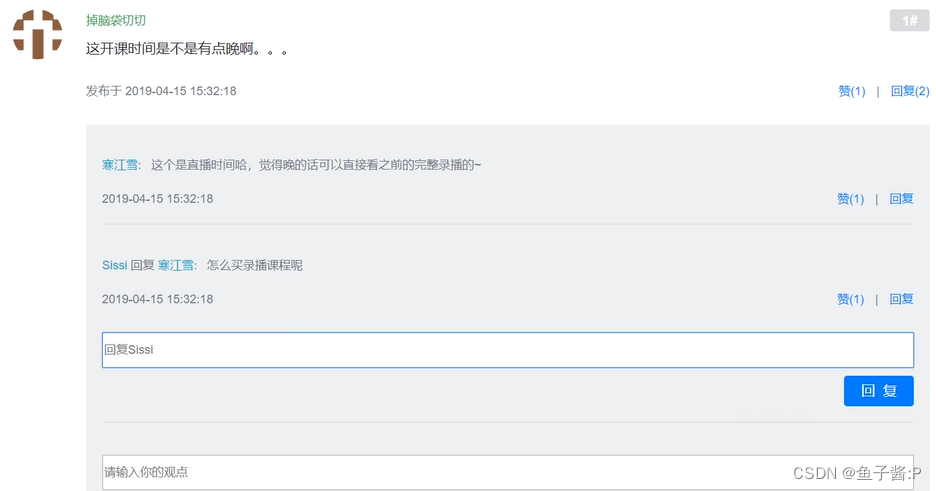
继 帖子详情后显示帖子的评论。同样在 DiscussPostController(/discuss)层的 /detail/{discussPostId} 映射中。我们将 comment 表中的 entity_type 属性在 CommunityConstant 工具类中设置了两个实体常量,(帖子1,评论2),便于分页查询时使用。
新表:评论表Comment,至此已经出现DiscussPost帖子表,User用户表
1.开发思路
这个功能也是比较常规的功能,按照常规流程三层进行开发。
①数据层:
- 根据实体查询一页评论数据;
- 根据实体查询评论的数量。
②业务层:
- 处理查询评论的业务;
- 处理查询评论数量的业务。
③表现层:
- 显示帖子详情数据时,同时显示该帖子所有的评论数据。
2.具体过程
评论是显示在帖子详情页面,所以改造DiscussPostController的getDiscussPost方法。同时还给comment帖子表设置了两个常量。(帖子1,评论2),便于分页查询时使用。
1)首先设置评论分页信息。设置为每页显示5条,设置page的路径(/disscuss/detail/ + )和总的评论数。
2)设置完后就可以进行分页查询了。根据该帖子的 id 和类型利用 commentService.findCommentsByEntity 方法查询得到当前帖子的所有评论放到一个集合中。还要呈现其它信息,将该帖子的评论和该评论的作者加入到Map中,当然不仅帖子有评论,评论也有回复的评论,所以也要把它的评论查到显示,这里比较绕,我们称普通评论为评论,评论的评论为回复。3)刚刚Map封装的是一个评论,这会继续查回复,这里就不用分页了,从第一行开始查,还是在该Map中嵌套插入一个包括该评论的所有回复reply,回复作者和回复目标(target)。再commentService.findCommentCount将回复数量插入Map(因为前端也会展示总的评论数)。完成以后最后将每个评论的Map传入模板Model。(难点)
3)整个逻辑就是查出当前帖子下的所有评论,遍历所有评论,处理用户名等信息,查询评论下的回复,遍历每个回复,处理用户名等信息。最后返回 /site/discuss-detail 页面。
①在entity包下新建实体类:Comment,对应评论的表。

package com.nowcoder.mycommunity.entity;
import java.util.Date;
//对应于【评论】表
public class Comment {
private int id;
private int userId;
private int entityType; //评论类型,1代表帖子,2代表评论
private int entityId; //对应回复实体的ID,如帖子id 228,或帖子id 229
private int targetId; //回复的对象,即向某个人的评论
private String content;
private int status;
private Date createTime;
// get()、set()
// toString()
}②数据层:在dao包下,创建接口CommentMapper,主要有两个方法,一个是查询评论,一个是查询评论数量,这里也需要用到分页查询,用了offeset和limit.
由于涉及到分页,需要用到两个方法:查询某页有多少数据、查询一共有多少条数据
package com.nowcoder.mycommunity.dao;
import com.nowcoder.mycommunity.entity.Comment;
import org.apache.ibatis.annotations.Mapper;
import java.util.List;
@Mapper
public interface CommentMapper {
//查询评论时,进行分页的两个方法
List<Comment> selectCommentsByEntity(int entityType, int entityId, int offset, int limit);
int selectCountByEntity(int entityType, int entityId);
}
在resources.mapper下创建comment-mapper.xml,用来实现上面接口中的SQL语句。
<?xml version="1.0" encoding="UTF-8" ?>
<!DOCTYPE mapper
PUBLIC "-//mybatis.org//DTD Mapper 3.0//EN"
"http://mybatis.org/dtd/mybatis-3-mapper.dtd">
<mapper namespace="com.nowcoder.mycommunity.dao.CommentMapper">
<sql id="selectFields">
id, user_id, entity_type, entity_id, target_id, content, status, create_time
</sql>
<select id="selectCommentsByEntity" resultType="Comment">
select <include refid="selectFields"></include>
from comment
where status = 0
and entity_type = #{entityType}
and entity_id = #{entityId}
order by create_time asc
limit #{offset}, #{limit}
</select>
<select id="selectCountByEntity" resultType="int">
select count(id)
from comment
where status = 0
and entity_type = #{entityType}
and entity_id = #{entityId}
</select>
</mapper>
③在service目录下创建:CommentService,业务层也比较简单,没有什么需要处理的,直接返回查询结果
package com.nowcoder.mycommunity.service;
import com.nowcoder.mycommunity.dao.CommentMapper;
import com.nowcoder.mycommunity.entity.Comment;
import org.springframework.beans.factory.annotation.Autowired;
import org.springframework.stereotype.Service;
import java.util.List;
@Service
public class CommentService {
@Autowired
private CommentMapper commentMapper;
public List<Comment> findCommentsByEntity(int entityType, int entityId, int offset, int limit){
return commentMapper.selectCommentsByEntity(entityType, entityId, offset, limit);
}
public int findCommentCount(int entityType, int entityId){
return commentMapper.selectCountByEntity(entityType, entityId);
}
}
④在controller.DiscussPostController中添加方法
评论是显示在帖子详情页面,所以改造DiscussPostController的getDiscussPost方法。
- 注入CommentService
- 借助分页,参数添加page
- 设置评论分页信息,每页显示5条,设置page的路径和总的评论数。
- 得到当前帖子的所有评论
- 遍历评论集合,创建评论VO列表,并放入map封装数据
整个逻辑就是查出当前帖子下的所有评论,遍历所有评论,处理用户名等信息,查询评论下的回复,遍历每个回复,处理用户名等信息。
@RequestMapping(path = "/detail/{discussPostId}", method = RequestMethod.GET)
public String getDiscussPost(@PathVariable("discussPostId") int discussPostId, Model model, Page page){
//查询得到帖子
DiscussPost post = discussPostService.findDiscussPostById(discussPostId);
//将帖子传给模板
model.addAttribute("post",post);
//查询出发帖人
User user = userService.findUserById(post.getUserId());
model.addAttribute("user", user);
//评论的分页信息
page.setLimit(5);
page.setPath("/discuss/detail/" + discussPostId);
page.setRows(post.getCommentCount()); //帖子中的评论数量
//评论:给帖子的评论(楼主)
//回复:给评论的评论(楼内的互相评论)
//评论列表
List<Comment> commentList =
commentService.findCommentsByEntity(ENTITY_TYPE_POST, post.getId(), page.getOffset(), page.getLimit());
//评论VO列表(显示列表)
List<Map<String, Object>> commentVoList = new ArrayList<>();
if(commentList != null){
for (Comment comment : commentList){
//评论VO
Map<String, Object> commentVo = new HashMap<>();
commentVo.put("comment", comment); //向VO中添加评论
commentVo.put("user", userService.findUserById(comment.getUserId())); //向VO中添加评论作者
//评论的回复:不分页
List<Comment> replyList = commentService.findCommentsByEntity(
ENTITY_TYPE_COMMENT, comment.getId(), 0, Integer.MAX_VALUE);
//回复的VO列表
List<Map<String, Object>> replyVoList = new ArrayList<>();
if(replyList != null){
for (Comment reply : replyList){
Map<String, Object> replyVo = new HashMap<>();
//存回复
replyVo.put("reply", reply);
//作者
replyVo.put("user", userService.findUserById(reply.getUserId()));
User target = reply.getTargetId() == 0 ? null : userService.findUserById(reply.getTargetId());
replyVo.put("target", target);
replyVoList.add(replyVo);
}
}
//目前包含楼主的评论,以及回复楼主的评论
commentVo.put("replys", replyVoList);
//楼中的评论数量
int replyCount = commentService.findCommentCount(ENTITY_TYPE_COMMENT, comment.getId());
commentVo.put("replyCount", replyCount);
//里面装有所有楼层,以及楼层中的回复、数量信息
commentVoList.add(commentVo);
}
}
model.addAttribute("comments", commentVoList);
return "/site/discuss-detail";
}
注:由于用到新的常量,在util.CommunityConstant中添加
//帖子的实体类型
int ENTITY_TYPE_POST = 1;
//评论的实体类型
int ENTITY_TYPE_COMMENT = 2;四:评论帖子
添加评论的功能也是比较基础的,按照数据层业务层和表现层进行开发,比较特别的就是会用到前面提到的事务管理。
为了效率,在帖子的字段里设计了一个评论数量,那么我们添加评论的时候就要同时更新评论数量。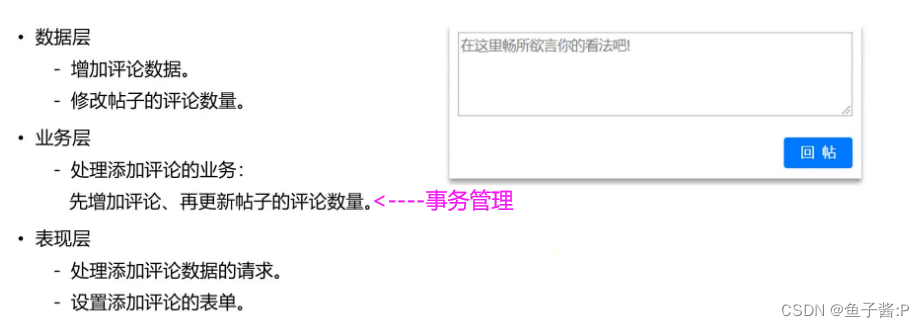
添加 评论分为三种:①回帖 ②回评论 ③回某人评论
- 在 discuss-detail 页面点击最下方的回帖,映射到 CommentController 层的 /add/{discussPostId}。addComment方法里声明一个实体来知道给帖子评论的还是给某人回复的,① 传入了 entityType = 1 和 entityId = post.id 。② 在评论下方回复,与①映射相同,传入entityType = 2 和 entityId = comment.id。③ 对某人的评论回复,与①映射相同,传入entityType = 2 和 entityId = comment.id 和 targetId。
- 对传入的 comment 进一步设置userId,Status,CreateTime。然后调用commentService.addComment(comment) 方法插入数据库。commentService.addComment 使用了事务注解。该方法对 comment 的 content 进行转义HTML标记。然后使用 commentMapper.insertComment 插入评论。然后通过 commentMapper.selectCountByEntity 查询帖子的评论数量,再使用 discussPostService.updateCommentCount 方法将评论数量插入帖子详情表。
- 重定向 return “redirect:/discuss/detail/” + 帖子discussPostId。 刷新帖子详情页面。
①DiscussPostMapper中添加方法UpdatecommentCount:
帖子表因为有一个冗余的显示帖子数量的一个字段,所以帖子更新后,帖子表也要进行一个更新。
//插入评论后,更新对应帖子的评论数量
int updateCommentCount(int id, int commentCount);
对应的discusspost-mapper.xml的SQL语句:
<update id="updateCommentCount">
update discuss_post set comment_count = #{commentCount} where id = #{id}
</update>②CommentMapper里新增 添加评论的方法insertcomment
package com.nowcoder.mycommunity.dao;
import com.nowcoder.mycommunity.entity.Comment;
import org.apache.ibatis.annotations.Mapper;
import java.util.List;
@Mapper
public interface CommentMapper {
//查询评论时,进行分页的两个方法
List<Comment> selectCommentsByEntity(int entityType, int entityId, int offset, int limit);
int selectCountByEntity(int entityType, int entityId);
//增加评论
int insertComment(Comment comment);
}
在resources.mapper创建对应的comment-mapper.xml:
<?xml version="1.0" encoding="UTF-8" ?>
<!DOCTYPE mapper
PUBLIC "-//mybatis.org//DTD Mapper 3.0//EN"
"http://mybatis.org/dtd/mybatis-3-mapper.dtd">
<mapper namespace="com.nowcoder.mycommunity.dao.CommentMapper">
<!--查询字段-->
<sql id="selectFields">
id, user_id, entity_type, entity_id, target_id, content, status, create_time
</sql>
<!--插入字段:比查询少一个id(主键自增)-->
<sql id="insertFields">
user_id, entity_type, entity_id, target_id, content, status, create_time
</sql>
<select id="selectCommentsByEntity" resultType="Comment">
select <include refid="selectFields"></include>
from comment
where status = 0
and entity_type = #{entityType}
and entity_id = #{entityId}
order by create_time asc
limit #{offset}, #{limit}
</select>
<select id="selectCountByEntity" resultType="int">
select count(id)
from comment
where status = 0
and entity_type = #{entityType}
and entity_id = #{entityId}
</select>
<!--添加评论-->
<insert id="insertComment" parameterType="Comment">
insert into comment (<include refid="insertFields"></include>)
values (#{userId}, #{entityType}, #{entityId}, #{targetId}, #{content}, #{status}, #{createTime})
</insert>
</mapper>3. 业务层
①DiscussPostService中添加刚才增删改查的业务方法updateCommentCount
//业务:插入评论后,更新对应帖子的评论数量
public int updateCommentCount(int id, int commentCount){
return discussPostMapper.updateCommentCount(id, commentCount);
}②创建CommentService,处理增加评论的核心操作,当前都在一个事务之内所以用声明式事务,加上 @Transactional(isolation = Isolation.READ_COMMITTED, propagation = Propagation.REQUIRED)注解,隔离级别,传播机制;只有更新为帖子的评论时,才更新其数量。
@Service
public class CommentService implements CommunityConstant {
@Autowired
private CommentMapper commentMapper;
@Autowired
private SensitiveFilter sensitiveFilter;
@Autowired
private DiscussPostService discussPostService;
public List<Comment> findCommentsByEntity(int entityType, int entityId, int offset, int limit){
return commentMapper.selectCommentsByEntity(entityType, entityId, offset, limit);
}
public int findCommentCount(int entityType, int entityId){
return commentMapper.selectCountByEntity(entityType, entityId);
}
//增加评论
@Transactional(isolation = Isolation.READ_COMMITTED, propagation = Propagation.REQUIRED)
public int addComment(Comment comment){
if(comment == null){
throw new IllegalArgumentException("参数不能为空!");
}
//评论的敏感词过滤
comment.setContent(HtmlUtils.htmlEscape(comment.getContent()));
comment.setContent(sensitiveFilter.filter(comment.getContent()));
int rows = commentMapper.insertComment(comment);
//更新对应帖子的评论数量
if(comment.getEntityType() == ENTITY_TYPE_POST){
//
int count = commentMapper.selectCountByEntity(comment.getEntityType(), comment.getEntityId());
discussPostService.updateCommentCount(comment.getEntityId(), count);
}
return rows;
}
}4. 表现层
新建一个CommentController,从地址里获取当前帖子的id,方便评论完重定向,前端传来的评论需要完善数据。
@Controller
@RequestMapping("/comment")
public class CommentController {
@Autowired
private CommentService commentService;
@Autowired
private HostHolder hostHolder;
//插入评论
@RequestMapping(path = "/add/{discussPostId}", method = RequestMethod.POST)
public String addComment(@PathVariable("discussPostId") int discussPostId, Comment comment){
comment.setUserId(hostHolder.getUser().getId());
comment.setStatus(0);
comment.setCreateTime(new Date());
commentService.addComment(comment);
return "redirect:/discuss/detail/" + discussPostId;
}
}边栏推荐
- 推开机电的大门《电路》(二):功率计算与判断
- 7. How to add the Click to RecyclerView and LongClick events
- IPV4和IPV6是什么?
- Actual combat Meituan Nuxt +Vue family bucket, server-side rendering, mailbox verification, passport authentication service, map API reference, mongodb, redis and other technical points
- Use libcurl to upload the image of Opencv Mat to the file server, based on two methods of post request and ftp protocol
- MATLAB图形加标注的基本方法入门简介
- LORA芯片ASR6601支持M4内核的远距离传输芯片
- Cmd Markdown 公式指导手册
- FP7128内置MOS降压恒流调光深度0.01%高辉共阳调光方案
- GMP scheduling model of golang
猜你喜欢
随机推荐
Use libcurl to upload the image of Opencv Mat to the file server, based on two methods of post request and ftp protocol
Letter combination of LeetCode2 phone number
DP1101兼容CC1101是SUB1GHz无线收发芯片应用于智能家居
深入理解Golang之Map
Win11没有本地用户和组怎么解决
DP4056电源保护芯片锂电池pin对pinTP4056
二叉树遍历之后序遍历(非递归、递归)入门详解
A clean start Windows 7?How to load only the basic service start Windows 7 system
Installation and configuration of Spark and related ecological components - quick recall
Win7怎么干净启动?如何只加载基本服务启动Win7系统
What is Win10 God Mode for?How to enable God Mode in Windows 10?
Cmd Markdown 公式指导手册
What should I do if I install a solid-state drive in Win10 and still have obvious lags?
FP5207电池升压 5V9V12V24V36V42V大功率方案
HAL框架
MATLAB绘图函数fplot详解
Win11怎么在右键菜单添加一键关机选项
Win10无法连接打印机怎么办?不能使用打印机的解决方法
pygame image rotate continuously
General syntax and usage instructions of SQL (picture and text)
